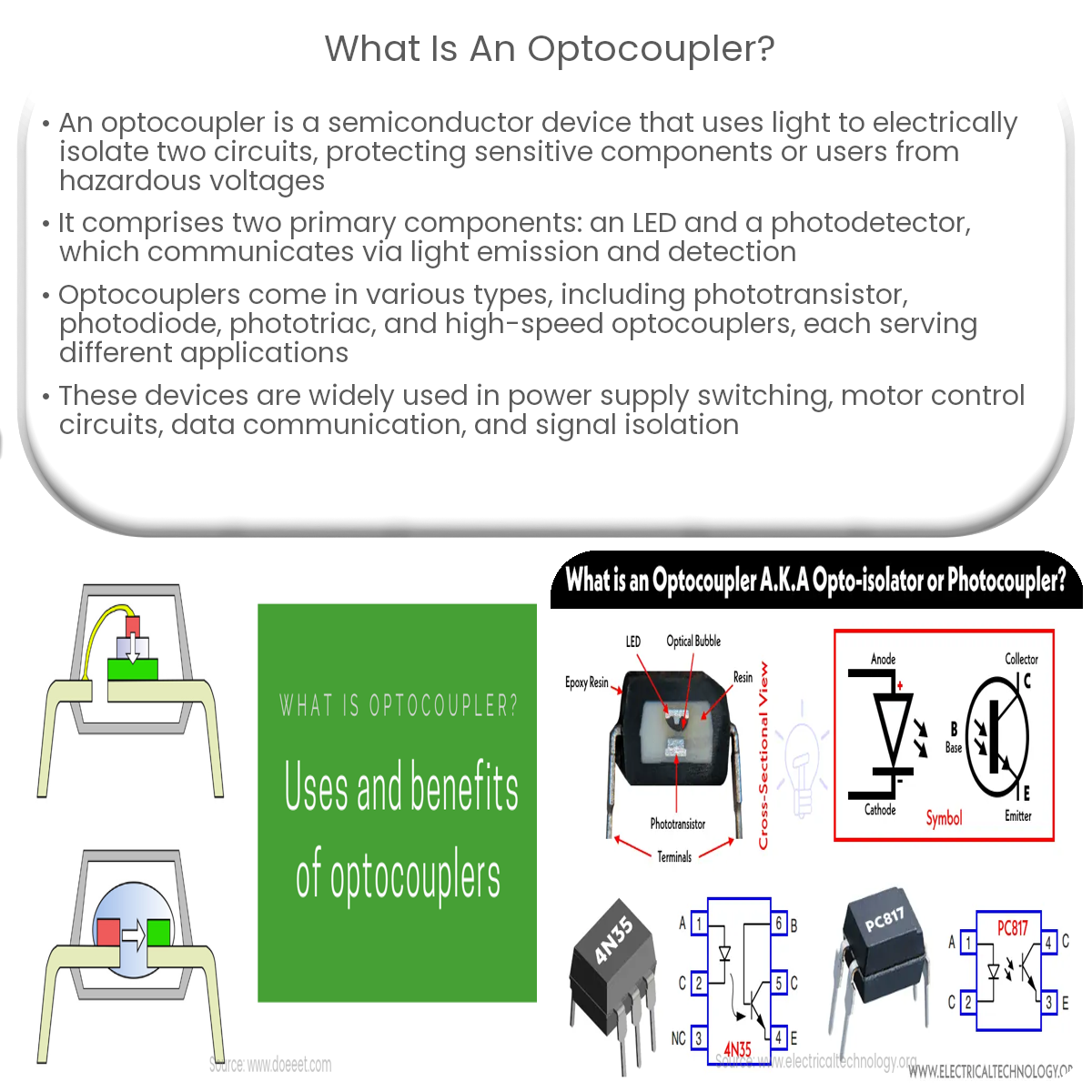An optocoupler is a device that uses light to electrically isolate two circuits while allowing them to communicate, preventing damage and hazards.
What is an Optocoupler?
An optocoupler, also known as an opto-isolator or photocoupler, is a semiconductor device that uses light to electrically isolate two separate circuits while allowing them to communicate with each other. It is commonly used in applications where electrical isolation is required to prevent damage to sensitive components or to protect users from hazardous voltages.
Optocoupler Components
An optocoupler consists of two primary components: an LED (light-emitting diode) and a photodetector. The LED emits light when current flows through it, and the photodetector, usually a phototransistor or a photodiode, generates an electrical signal when it detects the emitted light. The LED and photodetector are packaged together in a single unit, ensuring that the light is contained within the device.
How Optocouplers Work
When a voltage is applied to the input side of the optocoupler, the LED emits light, which is then detected by the photodetector on the output side. The photodetector generates an electrical signal proportional to the intensity of the light it receives. This signal is used to control another circuit, effectively transferring information between the two circuits without any direct electrical connection. The absence of a direct electrical connection provides electrical isolation between the input and output circuits.
Types of Optocouplers
- Phototransistor optocouplers: These are the most common type of optocouplers, using a phototransistor as the photodetector. They provide fast response times and are suitable for a wide range of applications.
- Photodiode optocouplers: These optocouplers use a photodiode as the photodetector, which provides a faster response time compared to phototransistor optocouplers, but with lower current transfer ratios.
- Phototriac optocouplers: These optocouplers use a phototriac, which is a solid-state switching device, as the photodetector. They are typically used in applications requiring high-voltage switching and isolation.
- High-speed optocouplers: These optocouplers are designed for high-speed data transmission applications, using advanced photodetectors such as photologic or PIN diodes for faster response times.
Applications of Optocouplers
Optocouplers are used in a variety of applications, including:
- Switching power supplies: Optocouplers provide feedback isolation between the primary and secondary sides of a power supply.
- Motor control circuits: They provide isolation between the low-voltage control circuitry and high-voltage motor drivers.
- Data communication: Optocouplers are used for data transmission between different voltage levels or to isolate noisy environments from sensitive circuits.
- Signal isolation: They can be used to isolate sensitive signal processing circuits from noisy environments or to prevent ground loops.


